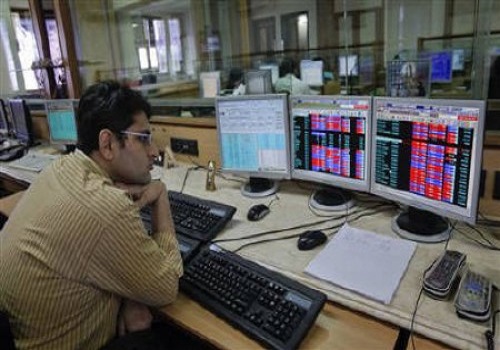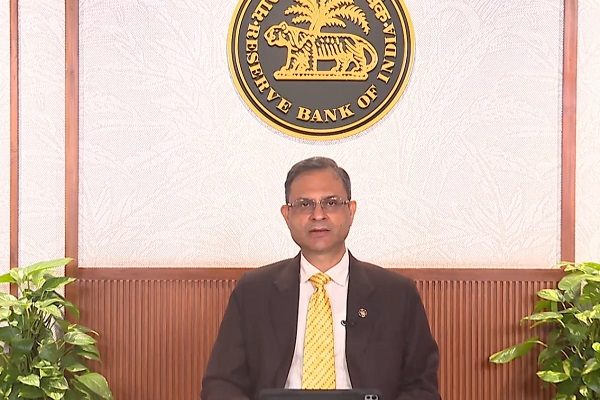Crudeoil trading range for the day is 6438-6684 - Kedia Advisory

Gold
Gold prices experienced a modest decline of -0.31% to settle at 71148, with investors eagerly awaiting further guidance from Federal Reserve officials regarding potential interest rate cuts. Richmond Fed President Thomas Barkin's remarks suggested satisfaction with the current interest rate level's ability to moderate economic growth and steer inflation towards the central bank's 2% target. Market sentiment, as reflected by Fed funds futures traders, indicates a 66% probability of rate cuts commencing in September, according to the CME's FedWatch Tool. In parallel, China's continued accumulation of gold reserves, with an addition of 60,000 troy ounces in April, extended its streak of consecutive purchases to 18 months despite elevated gold prices. China's gold holdings reached 72.80 million ounces by April's end, with the value of reserves climbing to $167.96 billion. The World Gold Council anticipates a slowdown in global central bank purchases in 2024 compared to the previous year, although levels are expected to remain higher than pre-2022 levels. Notably, the People's Bank of China led official sector gold buying in 2023, acquiring 7.23 million ounces, marking the highest annual purchase volume since at least 1977. Technically, the gold market witnessed long liquidation, evidenced by a significant drop in open interest by -4.81%, alongside a decline in prices by -221 rupees. Key support levels for gold stand at 70920, with potential downside to 70685, while resistance is likely at 71395, with a potential breakout leading to a test of 71635.
Trading Ideas:
* Gold trading range for the day is 70685-71635.
* Gold steadied as investors awaited more comments from Fed for further clarity on interest rate cuts.
* Fed’s Barkin said the current interest rate level should cool the economy enough to return inflation to the central bank's 2% target.
* Investors awaited more comments from Federal Reserve officials for further clarity on the timeline for potential interest rate cuts
Silver
Silver prices experienced a marginal decline of -0.09% in yesterday's trading session, settling at 82878. This dip was attributed to fresh hopes of impending rate cuts by the Federal Reserve, fueled by weaker-than-expected US jobs growth. The prospect of rate reductions gained momentum following comments from Fed officials, signaling a potential shift in monetary policy stance. Market sentiment was further influenced by developments in the Middle East conflict, with attention on ceasefire proposals and ongoing tensions between Hamas and Israel. The speculation surrounding Fed rate cuts strengthened as recent US economic data for April painted a picture of a struggling economy grappling with the Fed's restrictive interest rate framework. The US Nonfarm Payrolls (NFP) report revealed fewer job additions, a higher Unemployment Rate, and slower wage growth, indicating softening labor market conditions. Richmond Fed President Thomas Barkin's remarks echoed this sentiment, highlighting the challenging path to achieving the Fed's 2.0% inflation target amidst current interest rate levels. Technically, the silver market witnessed long liquidation, with open interest declining by -0.85% alongside a price drop of -77 rupees. Currently, silver is supported at 82485, with potential downside towards 82090, while resistance is identified at 83305, with a potential breakout towards 83730. This technical overview suggests cautious trading sentiment amid evolving macroeconomic factors and market dynamics.
Trading Ideas:
* Silver trading range for the day is 82090-83730.
* Silver settled flat due to hopes of Fed rate cuts this year.
* US jobs growth weaker than expected, boosting silver gains.
* Fed officials hinting at potential rate reductions bolster gold prices.
Crude oil
Crude oil prices saw a modest increase of 0.66%, settling at 6585, driven by ongoing geopolitical tensions that overshadowed concerns about ample supply. The Israeli military cabinet's rejection of a ceasefire agreement with Hamas and continued strikes in Gaza's Rafah city contributed to market jitters. However, limited signs of escalation and Iran's restrained military involvement helped maintain oil tanker activity through the Strait of Hormuz, curbing fears of disruptions. Market attention also turned to weekly production updates from the US, where output is threatening to outpace demand. Recent increases in US crude oil production have led to a gradual buildup in inventories, prompting energy markets to anticipate a pullback in production figures. Russian Deputy Prime Minister Alexander Novak's remarks about the readiness of the OPEC+ group to adjust oil production added to market dynamics. While formal talks on extending voluntary output cuts beyond June have not commenced, OPEC+ producers remain open to maintaining cuts if demand fails to recover. Technically, crude oil markets witnessed short covering, with a notable drop in open interest by -14.29% alongside a price increase of 43 rupees. Key support for crude oil is at 6511, with potential downside to 6438, while resistance is likely at 6634, possibly leading to a test of 6684 if breached. Traders are advised to monitor geopolitical developments and production dynamics closely for further market direction.
Trading Ideas:
* Crudeoil trading range for the day is 6438-6684.
* Crude oil gains as lingering geopolitical concerns outweighed the perception of ample supply.
* Russia's Novak: OPEC+ will act on oil output if necessary
* Crude oil markets will be keeping an eye out for weekly production updates from the US as output threatens to outpace demand.
Natural gas
Natural gas prices experienced a decline of -1.13% in yesterday's trading session, settling at 184.2, driven by a greater-than-expected decrease in forecast demand over the next two weeks. However, downside pressure was limited by a concurrent decline in output and an increase in feedgas to liquefied natural gas (LNG) export plants. Notably, US gas production has been down approximately 11% in 2024, following delays in well completions and drilling activities by energy firms like EQT and Chesapeake Energy in response to plummeting prices earlier in the year. According to financial firm LSEG, gas output in the Lower 48 US states has declined to an average of 96.9 billion cubic feet per day (bcfd) so far in May, compared to 98.1 bcfd in April and a monthly record of 105.5 bcfd in December 2023. On a daily basis, output is on track to decrease by approximately 3.1 bcfd over the past four days, reaching a preliminary 15-week low of 94.7 bcfd on Tuesday. Meteorological projections indicate a shift from near-normal weather to warmer-than-normal conditions across the Lower 48 states from May 15-22. In terms of technical analysis, the natural gas market is witnessing long liquidation, with a drop in open interest by -8.55% alongside a price decrease of -2.1 rupees. Currently, natural gas is supported at 180.2, with potential downside towards 176.2, while resistance is identified at 187.3, with a possible breakout towards 190.4. This technical overview suggests a cautious sentiment prevailing in the market, influenced by both demand forecasts and supply dynamics.
Trading Ideas:
* Naturalgas trading range for the day is 176.2-190.4.
* Natural gas dropped amid decline in forecast demand over the next two weeks.
* However downside seen limited amid decline in output and increase in feedgas to LNG export plants.
* Gas output in the Lower 48 U.S. states fell to an average of 96.9 billion cubic feet per day (bcfd) so far in May, down from 98.1 bcfd in April.
Copper
Copper prices experienced a slight decline of -0.2%, settling at 865, largely due to uncertainties surrounding demand from the Chinese property market. Despite this, downward pressure remained limited as optimism persisted regarding stronger demand from China, the world's largest consumer of copper. Chinese authorities' plans for additional measures to bolster the economy, including monetary and fiscal policies, contributed to market sentiment. Chile reported a significant increase in copper exports in April, up by 25.3% compared to the previous year, reflecting robust demand from global markets. Furthermore, the relaxation of home purchase restrictions in China's Shenzhen city aimed at stimulating the property market, a key consumer of industrial materials including copper, provided additional support. Additionally, declining copper stocks in LME-registered warehouses, which have decreased by 35% since the beginning of the year to 107,350 metric tons, underscored tightening supply conditions. However, the International Copper Study Group (ICSG) forecasted a surplus in the global copper market for both 2024 and 2025, highlighting potential challenges despite current market dynamics. World refined copper production is projected to increase by approximately 2.8% in 2024 and 2.2% in 2025, according to the ICSG. From a technical standpoint, the copper market witnessed long liquidation, with a drop in open interest by -0.82% alongside a slight price decrease of -1.7 rupees. Key support for copper is at 860, with a potential downside to 855, while resistance is likely at 869.2, with a breakout possibly leading to a test of 873.4.
Trading Ideas:
* Copper trading range for the day is 855-873.4.
* Copper dropped amid a lack of clear demand improvement from the troubled Chinese property market.
* However, downside seen limited amid hopes of stronger demand in China, where authorities are planning further measures to prop up the economy.
* Chile saw exports of the red metal reach $4.19 billion in April, up 25.3% from a year earlier.
Zinc
Zinc prices saw a notable uptick of 1.16% in yesterday's trading session, settling at 262.1, buoyed by a weakening US dollar and mounting concerns regarding potential deficits in the market. Chinese smelters are eyeing increased exports to capitalize on elevated global prices, particularly as processing fees for zinc concentrate into refined zinc hit a multi-year low due to material shortages. This trend is fueled by growing demand expectations, especially from the renewable energy and electric vehicle sectors, alongside optimism surrounding China's economic recovery, underscored by the expansion in manufacturing activities reported in April. Furthermore, data from the International Lead and Zinc Study Group (ILZSG) revealed a widening global zinc market surplus, reaching 40,100 metric tons in February compared to 12,300 tons in January. This surplus trend contrasts sharply with the deficit recorded during the same period last year, indicating a shift in market dynamics. Additionally, Nyrstar's Budel smelting operations in the Netherlands are set to resume production, driven partly by the higher prices for zinc, which is used in galvanizing steel. Despite the restart, operations will initially be at reduced capacity. From a technical standpoint, the zinc market observed fresh buying interest, with a significant increase in open interest by 10.84% alongside a price rise of 3 rupees. Currently, zinc is supported at 259.2, with potential downside towards 256.2, while resistance is identified at 264.5, with a potential breakout towards 266.8. This technical overview suggests a bullish sentiment prevailing in the market, driven by both fundamental factors and buying momentum.
Trading Ideas:
* Zinc trading range for the day is 256.2-266.8.
* Zinc gains due to weakening U.S. dollar and increased market concerns about potential deficits.
* Chinese smelters aim to boost exports to benefit from global prices.
* Fees for processing zinc concentrate fell to their lowest level since 2013, 33%.
Aluminium
Aluminium prices saw a marginal decline of -0.09%, settling at 234.35, influenced by ongoing production curbs in Yunnan due to the annual dry season. Concerns over bauxite security in China heightened following disruptions in Guinea, a key supplier, after an explosion in a fuel depository. Additionally, fears of future restrictions on Russian metal buying outside LME contracts dampened supply prospects, impacting market sentiment. China's robust imports of unwrought aluminium and products surged by 89.8% in March, reaching 380,000 metric tons, driven by strong demand. This trend continued in the first quarter, with imports totaling 1.1 million tons, up 92.3% from the previous year. Concurrently, China's primary aluminium output in March increased by 7.4%, reaching 3.59 million metric tons, buoyed by rising metal prices and increased demand across various sectors such as automotive, construction, and packaging. Furthermore, China's manufacturing activity expanded for the first time in six months, signaling a recovery in demand for aluminium. This uptick in production and demand contributed to a 6.8% year-on-year increase in aluminium production for the first three months of 2024, according to data from the National Bureau of Statistics. Technically, the aluminium market witnessed long liquidation, with a decline in open interest by -1.44% alongside a slight price decrease of -0.2 rupees. Key support for aluminium is at 233, with potential downside to 231.6, while resistance is likely at 235.9, with a potential breakout leading to a test of 237.4.
Trading Ideas:
* Aluminium trading range for the day is 231.6-237.4.
* Aluminium gains as smelters in Yunnan, remained subject to production curbs.
* Supply prospects were further hurt by fears that Western consumers will be hesitant to engage in Russian metal buying outside LME contracts.
* China's imports of unwrought aluminium and products jumped 89.8% at 380,000 metric tons in March
Cottoncandy
Cottoncandy prices edged up by 0.07% in yesterday's trading session, settling at 57520, amidst contrasting factors influencing the cotton market. On one hand, prospects of a better crop in countries like Australia exerted downward pressure on prices. However, this downside was limited as demand for Indian cotton remained robust, particularly from key buyers such as Bangladesh and Vietnam. The International Cotton Advisory Committee (ICAC) projected increases across various metrics for the next season, including cotton-producing area, production, consumption, and trade, indicating optimism in the cotton market. Notably, India's cotton stocks are anticipated to plummet by nearly 31% in 2023/24, reaching their lowest level in over three decades due to lower production and rising consumption. This reduction in stockpiles is expected to constrain exports from India, the world's second-largest producer, consequently supporting global prices while potentially impacting the margins of local textile companies. Looking ahead to the 2024/25 marketing year, India's cotton production is estimated to decrease by 2% to 25.4 million 480 lb. bales, attributed to farmers shifting acreage to higher return crops. However, mill consumption is projected to rise by 2% on the back of improved demand for yarn and textiles in major international markets. Additionally, with the recension of import duty on extra-long staple (ELS) cotton, imports are forecasted to increase by 20%. Meanwhile, China's cotton imports for the 2024/25 marketing year are expected to reach 2.4 million metric tons, driven by higher domestic and international demand for textile and apparel products. The technical overview indicates short covering in the market, with open interest remaining unchanged and prices rising by 40 rupees. Currently, Cottoncandy is supported at 57380, with potential downside towards 57230, while resistance is identified at 57640, with a possible breakout towards 57750.
Trading Ideas:
* Cottoncandy trading range for the day is 57230-57750.
* Cotton settled flat amid prospects of a better crop in countries such as Australia.
* India's cotton stocks set to plunge 31% y/y to lowest in decades
* Cotton stocks at the end of 2023/24 marketing year could fall to 2 million bales - CAI
* In , a major spot market, the price ended at Rupees dropped by percent.
Turmeric
Turmeric prices saw a modest uptick of 0.39%, settling at 18472, driven by active festive demand coupled with below-normal supplies. However, the upside was capped by expectations of new arrivals from the Marathwada region in Maharashtra, with reports indicating significant increases in supply compared to the previous week. The Ministry of Agriculture and Farmers’ Welfare's first advance estimate projected a decrease in turmeric production for the 2023-24 season, potentially contributing to supply constraints. Despite the rise in prices, demand destruction has been observed, with many consumers adopting hand-to-mouth practices. Nonetheless, turmeric-growing regions such as Sangli, Basmat, and Hingoli are experiencing robust demand for quality turmeric, driven by expectations of an increase in sowing area for the current year. Turmeric exports during Apr-Feb 2024 registered a decline of 4.42% compared to the same period in the previous year, while imports decreased by 15.36% during the same timeframe. However, there was a notable rise in imports in February 2024 compared to January 2024, indicating potential shifts in demand dynamics. From a technical perspective, the turmeric market witnessed fresh buying, with a gain in open interest by 0.51% alongside a price increase of 72 rupees. Key support for turmeric stands at 18260, with a potential downside to 18048, while resistance is likely at 18624, with a potential breakout leading to a test of 18776. Traders should closely monitor supply trends, demand dynamics, and international trade patterns to anticipate future movements in turmeric prices.
Trading Ideas:
* Turmeric trading range for the day is 18048-18776.
* Turmeric gained amid below normal supplies and active festive demand.
* However, upside seen limited as new arrivals are expected from the Marathwada region in Maharashtra.
* The Ministry of Agriculture first advance estimate for turmeric production in 2023-24 is estimated at 10.74 lakh tonnes
* In , a major spot market, the price ended at Rupees dropped by percent.
Jeera
Jeera prices surged by an impressive 5.91% in yesterday's trading session, settling at 26540, driven by robust export demand and aggressive buying by stockists. Indian jeera remains preferred by global buyers due to tightening global supplies, although the upside was somewhat restrained by the possibility of further pressure from increased arrivals in the market. The influx of 10000 to 12000 bags of jeera daily in Rajkot Mandi has led to an imbalance between supply and demand, with new arrivals reported in Gujarat and Rajasthan over the past few weeks. The surge in production in major cumin-producing regions such as Gujarat and Rajasthan has been remarkable, with Gujarat alone estimated to produce a record 4.08 lakh tonnes of cumin, marking a significant increase from previous years. Trade analysts anticipate a substantial increase in cumin exports, with estimates reaching about 14-15 thousand tonnes by February 2024. However, the previous year saw a decline in cumin exports due to soaring domestic prices, with exports dropping by 23.75% during Apr-Feb 2024 compared to the same period in 2023. Technically, the jeera market witnessed short covering, with a drop in open interest by -3.76% alongside a significant price increase of 1480 rupees. Currently, jeera is supported at 25660, with potential downside towards 24790, while resistance is identified at 26980, with a possible breakout towards 27430. This technical overview suggests a mixed sentiment prevailing in the jeera market, influenced by both fundamental factors and short-term trading dynamics.
Trading Ideas:
* Jeera trading range for the day is 24790-27430.
* Jeera prices rallied amid robust export demand and aggressive buying by stockists.
* Global buyers preferred Indian jeera with tightening global supplies.
* New arrivals have started in Gujarat since last 20-25 days and new arrivals have started in Rajasthan also since last 15 days.
* In Jodhpur, a major spot market, the price ended at 26000 Rupees dropped by 0 percent.
Views express by all participants are for information & academic purpose only. Kindly read disclaimer before referring below views.





















